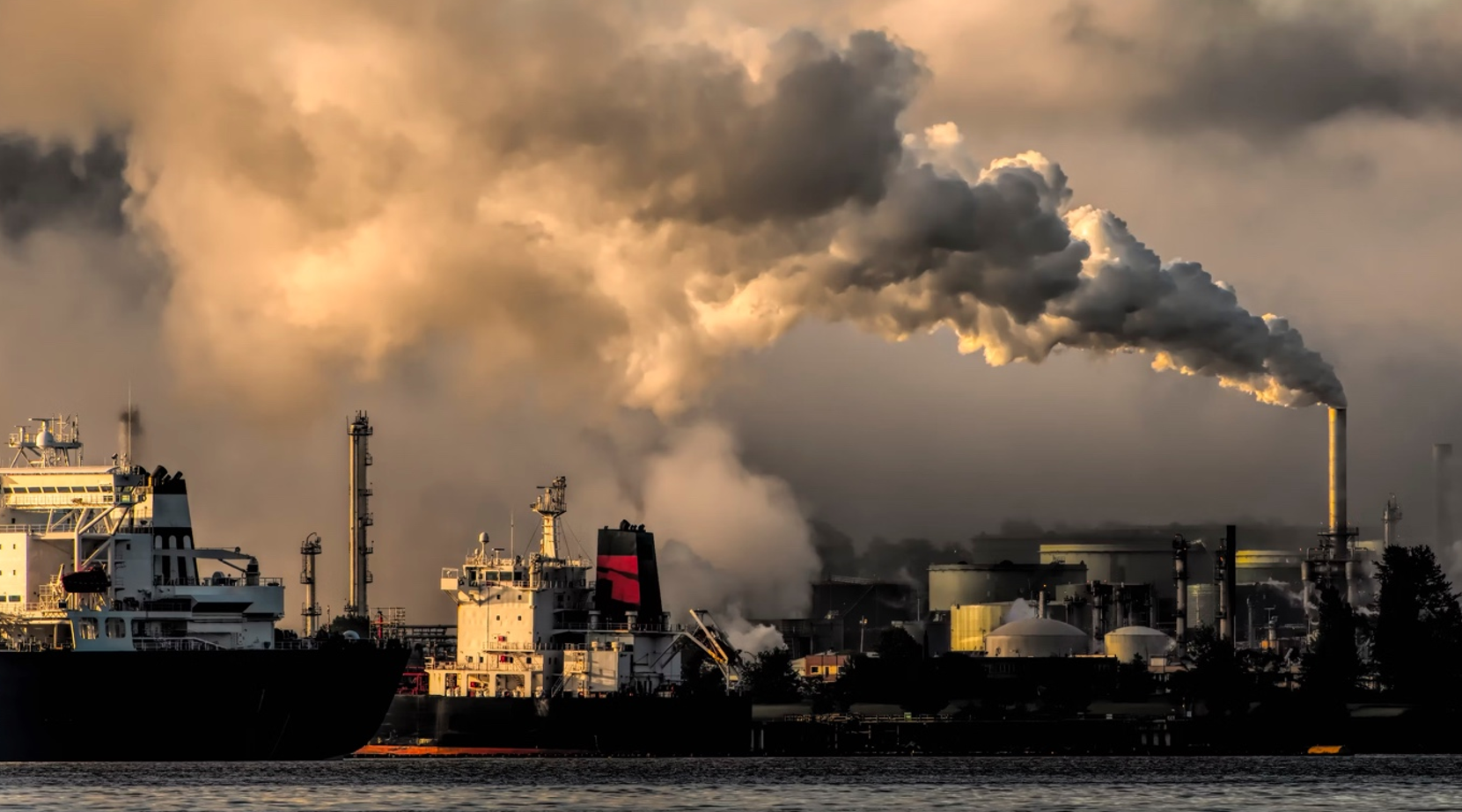 Fossil fuels pumped into the atmosphere threatens our health and survival. Photo by Chris LeBoutillier on Unsplash
Fossil fuels pumped into the atmosphere threatens our health and survival. Photo by Chris LeBoutillier on Unsplash
Scientists agree that humans are mainly responsible for climate change. This section delves deeper into why. But let’s start off with the natural balance of energy from the sun reaching and then being released from our planet.
Greenhouse gases, such as carbon dioxide (CO₂), methane (CH4), nitrous oxide (N2O), water vapour and others are present in the Earth’s atmosphere and add to the greenhouse effect.
These gases can occur naturally through processes like volcanic activity and the decay of organic matter. However human activities, such as burning fossil fuels, intensive agriculture, industry and deforestation, also release significant amounts of greenhouse gases into the atmosphere.
Without the greenhouse effect, a process through which the greenhouse gases trap heat near the Earth’s surface, we would not be able to survive. The global average temperature would drop to 18C (0.4 F) below zero. Imagine these gases as a cozy blanket cocooning our planet, helping to keep a warmer average temperature than it would have otherwise.
The illustration below shows how the greenhouse effect helps us to keep ournatural home warm enough for us and plants and animals to survive.

Why is our planet over heating?
At its most basic, climate change is caused by a change in the earth’s energy balance — how much of the energy from the sun that enters the earth, and its atmosphere is released back into space.
Human action is upsetting the balance – causing an oversupply of greenhouse gases which are trapping more heat, and this is causing an increase in global temperatures. So, while the greenhouse effect was our great ally before the Industrial revolution (late 1700 to early 1800s) it is now a risk to our survival.
Oceans and seas and forests absorb and store carbon naturally. However, with the increase in burning of fossil fuels, the ability of these systems to absorb emissions is becoming more challenging, and what we are witnessing is “global warming”.


How are humans causing climate change?
Burning a fossil fuel releases the energy stored in that ancient plant and animal matter into the atmosphere as an ’emission’. These energy sources are finite, so they are non-renewable. Charcoal is not a fossil fuel, though inefficient charcoal use increases emissions and causes deforestation.
The greenhouse gas responsible for the greatest amount of warming to date is carbon dioxide. The US-based National Oceanic and Atmospheric observatory , the global benchmark for measuring CO2 in the atmosphere, says as of 2022 the levels of (CO₂) in the atmosphere were more than 50% higher than pre-industrial levels.

When humans chop down trees, the carbon stored in the trees is released into the atmosphere, adding to the greenhouse effect. Large forest areas have been cleared for increased livestock farming. A case in point is the large tracts of the Amazon Forest that have been cleared.
More cows and sheep are adding to the already massive amount of methane gas (CH4) in the atmosphere, which the livestock expel when digesting their food.
Due to its molecular structure, methane traps more heat in the atmosphere per molecule that carbon dioxide CO2, making it 80 times more harmful than CO2 for 20 years after it is released, according to the United Nations Environmental Program. Methane is also emitted by landfills (dumpsites), oil and natural gas systems, coal mining and wastewater treatment.
The heavy use of commercial fertilizers containing nitrogen produces Nitrous Oxide (N2O) emissions.
What are humans doing about fossil fuels?
Countries – some more than others – are trying to reduce or remove greenhouse gas in the atmosphere so that the amount being released into the atmosphere equals the amount being taken out. This balance is called net zero. However, current efforts to reduce greenhouse gas emissions are nowhere near enough to prevent a worsening in climate change. To halt this climate change effect, the total quantity of greenhouse gases emitted to the atmosphere must has to stop increasing.
It’s not all negative news though. The use of renewable energy multiplied in 2023.
According to the International Energy Agency In 2023, the renewable energy sector experienced a significant surge, witnessing a 50% increase in renewable capacity incorporated into global energy systems compared to the prior year. The development comes amid a global recognition that mitigating greenhouse gas emissions from electricity production is one of the most urgent and single most effective ways to impede runaway global warming and climate change.





